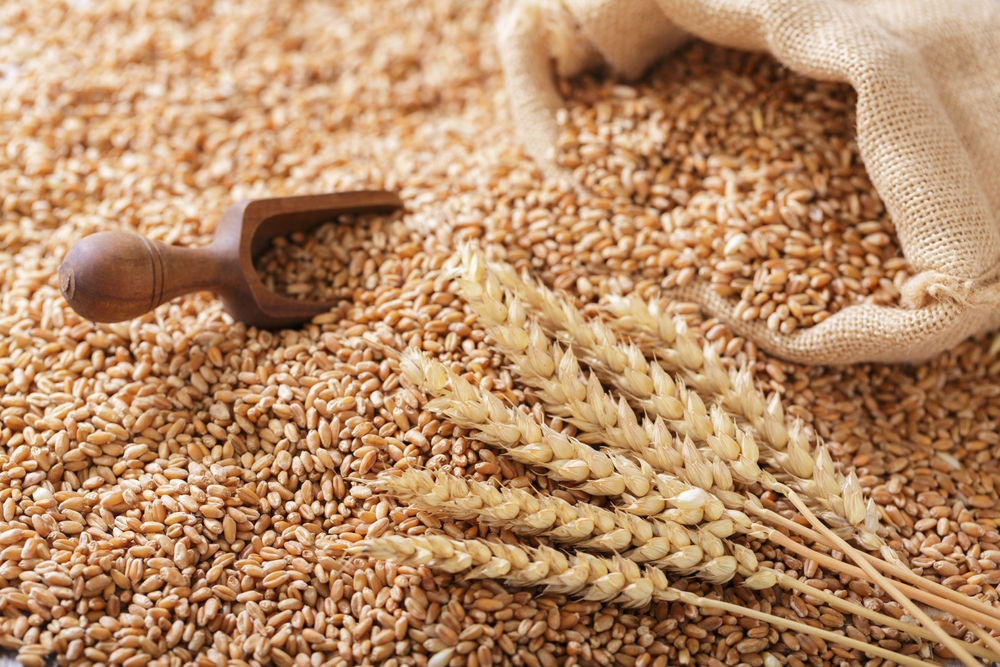Like humans, dogs require essential minerals and vitamins to function. Magnesium, along with calcium, phosphorus, and potassium, is an essential macromineral. It is important for bone formation, muscle, and nerve function. Magnesium must be included in the diet in sufficient amounts to avoid deficiencies. Commercially available complete dog foods contain enough magnesium for healthy dogs. A lack of magnesium in a dog’s diet can occur for various reasons, including chronic diarrhea, kidney failure, and diabetes.
This article examines magnesium-rich foods. However, not all of these foods are suitable for all dogs, depending on their age and health condition. Always speak to your vet before adding additional foods to your dog’s diet, especially if your dog is showing any signs of illness.
Top 6 Magnesium-Rich Food Sources for Dogs
1. Fish
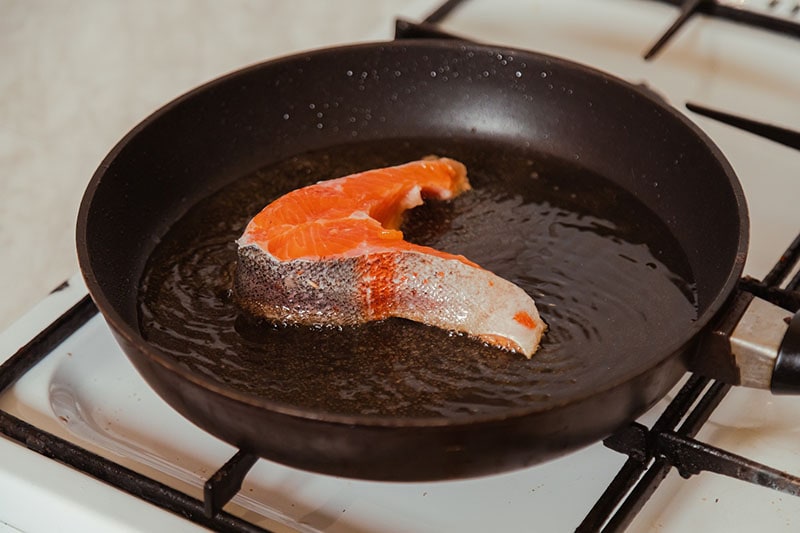
| Types: | Mackerel, salmon, pollock |
| How to Prepare: | Cooked and plain |
You can select a fresh, boneless fish fillet, but check it for tiny bones before cooking it. Then, you can grill, poach, bake, or steam it without oil, pepper, salt, or onions and garlic1, which are toxic to dogs2. The fish’s fins, head, bones, tail, and scales shouldn’t be included because they pose a choking hazard and risk damage to the gastrointestinal tract.
It’s important to avoid feeding your dog raw fish. Raw or undercooked fish can carry harmful bacteria such as salmonella and listeria, which are harmful to dogs and humans, especially children or people with compromised immune systems.
2. Organ Meats

| Types: | Liver, heart, kidneys |
| How to Prepare: | Cooked or raw |
Organ meats like liver, heart, and kidneys are rich in magnesium. The liver should be fed in small amounts and not every day. It contains a considerable amount of vitamin A, and consumption of large portions can lead to vitamin A toxicity.
If you serve raw organs, it is important to be aware that bacteria such as salmonella, E. coli, and listeria are commonly found in raw meat. Therefore, it’s crucial to take precautions when handling and feeding raw meat, such as washing your hands after touching it and cleaning every surface it touches. Raw food is especially hazardous to children or people with compromised immune systems.
You don’t need to feed your dog organs every day. Instead, aim for a variation in their diet. If this is the first time your dog has had raw meat, start with small amounts and gradually increase them.
3. Whole Grains
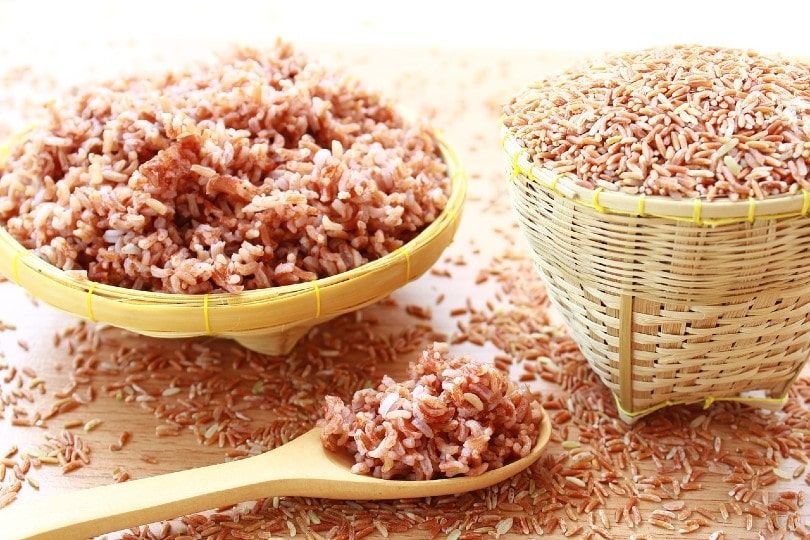
| Types: | Whole wheat, brown rice, barley |
| How to Prepare: | Follow instructions and keep plain |
You can prepare the grains similarly to how you cook them for humans; for example, you can boil rice in water. Avoid adding other ingredients like dairy or fats. Once it’s prepared, you can add the rice to your dog’s food. You can also serve a small portion as a treat if your dog enjoys it. If feeding as part of a home-cooked diet, follow a recipe from a veterinary nutritionist to ensure your dog’s diet is balanced.
4. Beans
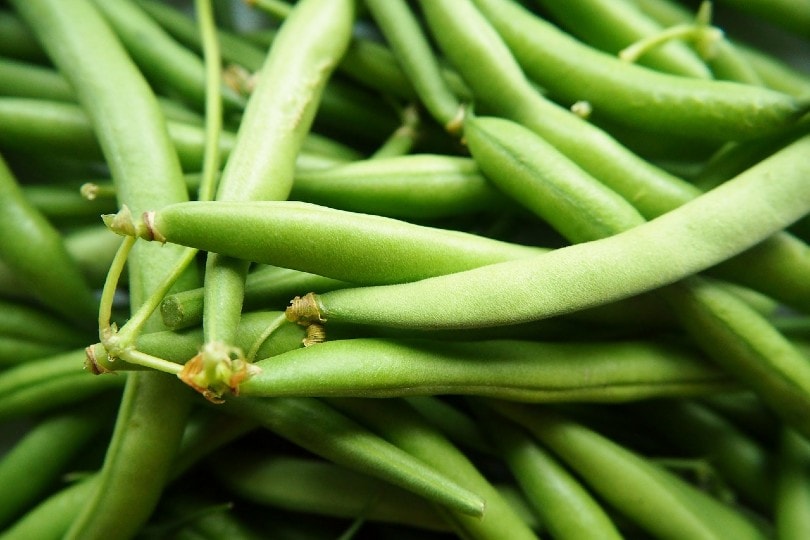
| Types: | Black beans, green beans |
| How to Prepare: | Cook black beans and serve fresh green beans |
Beans can be prepared for dogs the same way they’re cooked for people. Dogs can have beans that have been soaked and then cooked, but they shouldn’t consume uncooked beans because they’re nearly indigestible.
Green beans are also a good option; despite their name, they aren’t in the bean family. You can serve them fresh or cooked, but avoid canned beans since they generally have added sodium and preservatives. The ideal option is to purchase fresh beans from the grocery store, but if you choose flash-frozen green beans, steam or microwave them to thaw them out until they’re ready to cook.
5. Vegetables
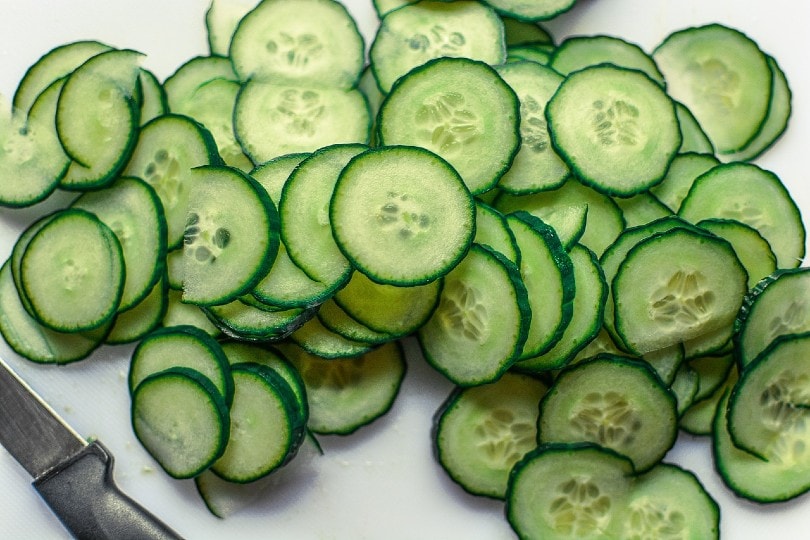
| Types: | Cucumber, spinach, peas |
| How to Prepare: | Depends on the vegetable |
Cucumbers are an excellent treat for your dog because there are only 8 calories per ½ cup. Make sure you cut the cucumber into manageable sizes, especially if you have a small dog or one that likes to wolf down their meals. The best way to prepare spinach for your dog is to steam it. Boiled spinach loses most of its nutrients, and raw spinach is hard to digest.
When you steam it, keep it plain and chop it so it’s easier for your dog to digest. You should only add small amounts of spinach to your dog’s diet since too much can damage the kidneys or cause digestive problems. Green peas are a healthy snack, and you can cook frozen, fresh, or thawed peas. Avoid canned peas since they have too much sodium.
6. Fruits
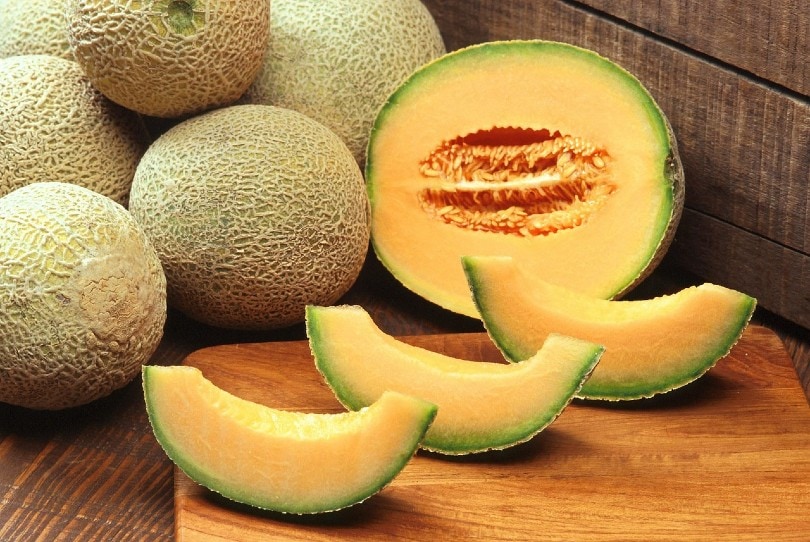
| Types: | Bananas, cantaloupe, pumpkins |
| How to Prepare: | Raw |
You can serve several nutritious fruits to your pup. Bananas are a healthy snack you can mash up in your dog’s food, stuff into a dog toy like a Kong, or slice and freeze. However, it’s best to avoid the peel; while it’s not toxic, it can be difficult to digest and could cause a blockage.
You can also cut up a cantaloupe into half-inch pieces and feed them to your dog. Make sure you remove the rind and seeds. If your dog is a little fussy, you can mash it up and add it to their food. Cooked pumpkin ( avoiding the stem, leaves, and skin) is safe for dogs and a source of magnesium, among other nutrients. You can also serve canned pumpkin as long as it is plain. Avoid pumpkin blends and mixes, such as pumpkin pie filling, which contains other ingredients that can harm dogs.
Remember, fruits are higher in sugar, so they should only be an occasional treat.
Frequently Asked Questions
Will My Dog Get Magnesium From a Commercial Dog Food Diet?
Magnesium is an essential mineral, and complete and balanced commercial pet foods should contain the right amounts to keep your dog healthy. There should be a breakdown of all the vitamins and minerals on the packaging, but you can speak to your vet if you have any concerns.
If you need to speak with a vet but can’t get to one, head over to PangoVet. It’s an online service where you can talk to a vet online and get the personalized advice you need for your pet — all at an affordable price!
What Are the Signs of Magnesium Deficiency?
Magnesium deficiency, also known as hypomagnesemia, is rare and only occurs in very sick dogs. Sometimes, it doesn’t cause many signs, but low magnesium can worsen other conditions and lead to low blood levels of other important electrolytes such as potassium and calcium.
- Difficulty walking
- Heart arrhythmia ( abnormal rhythm)
- Lethargy/abnormal behavior
- Loss of appetite
- Muscle pain
- Muscle weakness/trembling
Can Dogs Suffer From a Magnesium Overdose?
Excess magnesium in a dog’s body is known as hypermagnesemia. Conditions that can be associated with excess magnesium in the blood include kidney failure, Addison’s disease, and hypothyroidism. Possible signs that your dog is suffering from hypermagnesemia are:
- Low heart rate
- Hypotension
- Muscle weakness
- Nausea
- Respiratory depression
- Vomiting
If your dog’s magnesium levels are high, they are at a higher risk of cardiac arrest, so you must contact your vet if you notice any of these signs.
Conclusion
Magnesium is a very important mineral in your dog’s diet. If your dog is on a good quality complete dog food, they should be consuming the right amount. You can feed your dog various foods if you’re considering introducing more magnesium into their diet. It’s vital to include your vet in this decision. Any changes you make to your dog’s diet should be discussed with your vet to ensure it’s a good idea. Too much of anything, even something healthy, can become harmful, so you must serve the correct portions.
Featured Image Credit: Karsten Winegeart, Unsplash





